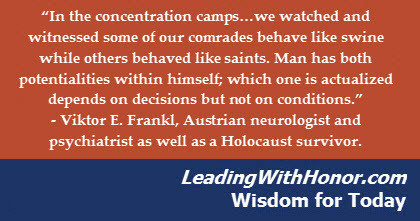Lee Ellis's Blog, page 280
March 8, 2016
Coming Soon! Engage with Honor – The Latest Release from Lee Ellis
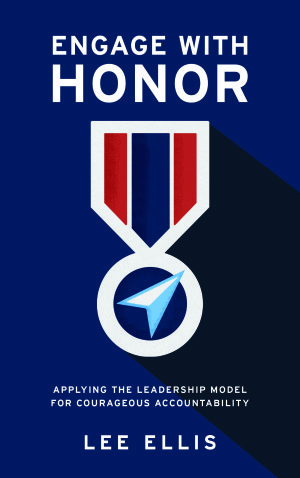
Coming Soon! The Latest Release from Lee Ellis
Coming in September 2016!
We’re excited to announce the upcoming release of Lee Ellis’ latest book, Engage with Honor: Applying the Leadership Model for Courageous Accountability. In it, Lee shares his concerns about the lack of accountability in our culture and how you can apply a positive, proven accountability model to get better results as a leader.
Please keep checking our Facebook page or Website for updates!


March 6, 2016
On This Day in Leadership History, March 6, 2016
On this day in leadership history in 1964, Tom O’Hara set a new world indoor record when he ran the mile in 3 minutes, 56.4 seconds. He later beat that record on March 6 of the same year with a time of 2:45.6, a world record that stood for fourteen years.
The leadership lesson? Think you’ve done the best you can do? Celebrate, and then keep striving for greater goals and aspirations and always keep learning!

Tom O’Hara with Daily News Trophy
Caption: Tom O’Hara receiving The Daily News trophy for his record-breaking 3:56.4 Bankers Mile, 6 March 1964
date original: 1964-03-06
date digital: 2012-07-26
Loyola University Chicago University Archives and Special Collections. University Photograph Collection. Athletics – Track, Mens, O’Hara, Thomas (broke indoor mile world record in 1964)
Tom O’Hara – Wikipedia


March 5, 2016
Georgia HR and Training Professionals – Join Lee at This Upcoming Event!
 Human Resource and Training Professionals in Georgia – join Lee Ellis at the annual Georgia SHRM Conference as I share about how to lead and train honorable, resilient, unified employees and staff. The 2016 theme is “HR and Business Superheroes Unite!”
Human Resource and Training Professionals in Georgia – join Lee Ellis at the annual Georgia SHRM Conference as I share about how to lead and train honorable, resilient, unified employees and staff. The 2016 theme is “HR and Business Superheroes Unite!”
Watch the clip below, and then Learn More on their website.


March 4, 2016
Leading with Honor Wisdom for Today, March 4, 2016
“In the concentration camps…we watched and witnessed some of our comrades behave like swine while others behaved like saints. Man has both potentialities within himself; which one is actualized depends on decisions but not on conditions.”
– Viktor E. Frankl, Austrian neurologist and psychiatrist as well as a Holocaust survivor.


March 3, 2016
Lee’s Latest Interview from the Nixon Foundation – Listen Inside
Here’s your leadership truth for today – “Bad leaders force good people to quit and move on.” Who agrees with this statement? In this ever competitive work environment in every industry today, no organization can afford to lose good people.
In Lee’s latest podcast interview with the Nixon Foundation, he shares his past and current experience as a leadership consultant and presenter.
Great wisdom – please listen and share your comments –

Lee Ellis’s latest interview from the Richard Nixon Foundation


March 2, 2016
From Humble Leader to Narcissist: Where Are You on the Continuum?
 >>>Watch Lee’s monthly coaching video on this topic! Register free for instant access. You can trust us with your email address.<<<
>>>Watch Lee’s monthly coaching video on this topic! Register free for instant access. You can trust us with your email address.<<<
By Lee Ellis
Typically, narcissism is historically associated with physical beauty. You may recall that in Greek mythology, Narcissus was the handsome young man who became so enchanted with the image of himself in the pool that he could not pull away. Today we hear about a leader who has narcissistic tendencies, but it’s not so much about their physical beauty as their strong, offensive ego.
Before dismissing this diagnosis as impossible in your own leadership, Psychology Today describes the full blown disorder this way –
“Narcissistic Personality Disorder involves arrogant behavior, a lack of empathy for other people, and a need for admiration–all of which must be consistently evident at work and in relationships. People who are narcissistic are frequently described as cocky, self-centered, manipulative, and demanding….and may be convinced that they deserve special treatment.”
Sliding Out of Balance
Actually, it’s my observation that many leaders have some inclination to slide out of balance into narcissism. Consider some of these leadership strengths and what happens when they get too strong –
Confident – Self-centered, talk mainly about their agenda, discount others
Decisive – Opinionated–sometimes wrong but never in doubt
Initiating – Too aggressive to get what they want
Outgoing – Need to be the center of attention
Accurate – React strongly to constructive feedback
Take charge – Controlling, believing that they are smarter, superior
Strategic – Manipulative of others to get what they want
Logical and Objective – Insensitive to the feelings and needs of others
Visionary – Blame others when something goes wrong
Now if you have a strong, confident personality, you may lack self-awareness of these unbalanced traits when you look in the mirror, but others notice them. To avoid acquiring a full-blown case of NPD (Narcissistic Personality Disorder), evaluate how many of these struggles show up in your thoughts and behavior and imagine how others experience you.
My Own Self-Awareness
You may wonder how I can be so “decisive and confident” in making these assertions. Aside from using and doing research with personality/behavioral assessments for 30 years, I have several of the strengths above and some of my closest friends do too. Confidentially, my friends and I share some of our narcissistic struggles with each other.
But like most people, strong personalities can swing from feelings of high confidence to insecurity several times a day.
The Opposite Side of the Spectrum
Recently in a leadership development training event, one leader who was outwardly the opposite of many of these strong characteristics was singled out for his leadership excellence. In the discussion, some of his more ego-driven peers encouraged the more humble leader to actively promote himself, saying that many of his achievements were often going unnoticed. Basically, his peers’ “decisive and confident” advice was to blow his own horn more so that others would take notice.
In reflecting on this experience, I came to the conclusion that the whole issue of outward ego strength could be put on a visual continuum – at least for purposes of discussion:
Low self-esteem < Passive < Humble — Balanced > Strong ego > Arrogant > Narcissist
Based on past experience, I would expect the following division in the general population –
1/3 lean toward a strong ego even egotistical.
1/3 lean toward a reticent or quiet ego.
1/3 are more balanced.
Since it’s part of our natural DNA behavior at birth, we don’t have much control of where we land on this continuum (other than occasional exceptions resulting from tragic life experiences). You may think there is some advantage to being on one side or the other, but both have their strengths and struggles. You can be a great leader from either side.
Maximizing Strengths, Minimizing Struggles
Regardless of where you are on this continuum, you can be a great leader. How can you coach yourself to maximize your strengths and minimize your struggles? Here are three valuable tips:
Gain more self-awareness of how others see you. What traits can you do more or less of to be more effective?
If you’re humble and reticent –
Believe in yourself and the value you bring to the table and assert yourself into situations.
Speak up to share your insights and ideas. Challenge issues when you disagree.
Stretch and take on high profile challenges that match your natural talents.
If you naturally have a strong ego –
Solicit input and practice active listening.
Set aside your agenda and become more aware of the other person’s feelings and your own feelings in the moment.
Consider how you can affirm, encourage, and support others.
We all have the opportunity and responsibility to lead others in becoming a more balanced leader. Abraham Lincoln has been called our greatest president and is an interesting example in this discussion. You can read more about his leadership balance in this case study. Whatever you do, choose to be a balanced, honorable leader!
LE
Free Offer – Identifying and Mastering Your Leadership Balance
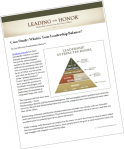 What were the leadership attributes that enabled President Abraham Lincoln to balance both getting results and nurturing relationships? Did you know that 40% of the population leans towards results-oriented behaviors, another 40% lean toward relationships-oriented behaviors, and the remaining 20% are somewhere in between? If you’ve ever encountered a leader that was heavily focused on work and getting results without a lot of social interaction, you’ve experienced an out-of-balance, results-oriented leader!
What were the leadership attributes that enabled President Abraham Lincoln to balance both getting results and nurturing relationships? Did you know that 40% of the population leans towards results-oriented behaviors, another 40% lean toward relationships-oriented behaviors, and the remaining 20% are somewhere in between? If you’ve ever encountered a leader that was heavily focused on work and getting results without a lot of social interaction, you’ve experienced an out-of-balance, results-oriented leader!
Download a free copy of Lee Ellis’ “Leadership Balance Case Study” to learn more about balancing these two areas in your own leadership.


March 1, 2016
Proof That Positive Work Cultures Are More Productive
 Disengaged workers in a negative work environment have 37% higher absenteeism, 49% more accidents, and 60% more errors and defects. Oppositely, creating a positive and healthy culture for your team boils down to six essential characteristics.
Disengaged workers in a negative work environment have 37% higher absenteeism, 49% more accidents, and 60% more errors and defects. Oppositely, creating a positive and healthy culture for your team boils down to six essential characteristics.
Check out this Harvard Business Review article, and please share your comments –


February 29, 2016
Leading with Honor Testimonial – Thank You!
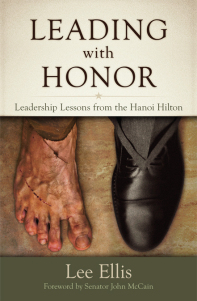 Thank you next generation leader, Mitchell P., for your enthusiastic comments about Leading with Honor –
Thank you next generation leader, Mitchell P., for your enthusiastic comments about Leading with Honor –
“I wanted to read this book because I wanted to be a stronger leader. Through boy scouts I have been in leadership positions and try to stand out from the crowd. I felt like this book helped me become a better leader in my community and school. I can relate to the Ellis because he is diligent and tries to keep everyone hopes up in bad situations. This book defiantly lived up to the promise. It has, indeed, helped me become a better leader.”
Leading with Honor – Link


February 28, 2016
On This Day in Leadership History, February 28, 2016
On this day in leadership history in 1881, Thomas Edison hired Samuel Insull as his private secretary.
Insull’s career began as an apprentice clerk for various local businesses at age 14. He went on to become a stenographer at Vanity Fair. Through a newspaper ad, the 19-year-old became the switchboard operator for the London office of Edison’s telephone companies. When he learned of a job with Edison in the US, Insull indicated he would be glad to have it, provided it was as Thomas Edison’s personal secretary.
Today, he is known as an innovator and investor who greatly contributed to creating an integrated electrical infrastructure in the United States. The leadership lessons? Surround yourself with innovative people, and don’t despise small beginnings in your life and career!
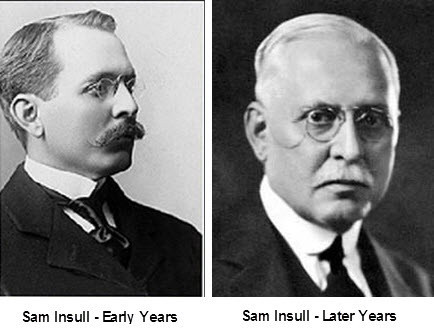 Samuel Insull – Wikipedia
Samuel Insull – Wikipedia


February 27, 2016
Ready to Leap into Spring with a Special Event? Join Lee in Pigeon Forge, TN!
 Ready to leap into Spring with a special weekend event? Join Lee at the RetroWeekend event at the new DollyWood DreamMore Resort in Pigeon Forge, TN as he shares stories and leadership lessons learned from the POW Camps of Vietnam.
Ready to leap into Spring with a special weekend event? Join Lee at the RetroWeekend event at the new DollyWood DreamMore Resort in Pigeon Forge, TN as he shares stories and leadership lessons learned from the POW Camps of Vietnam.
Learn more and register on their website –



